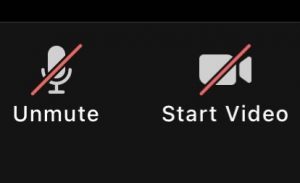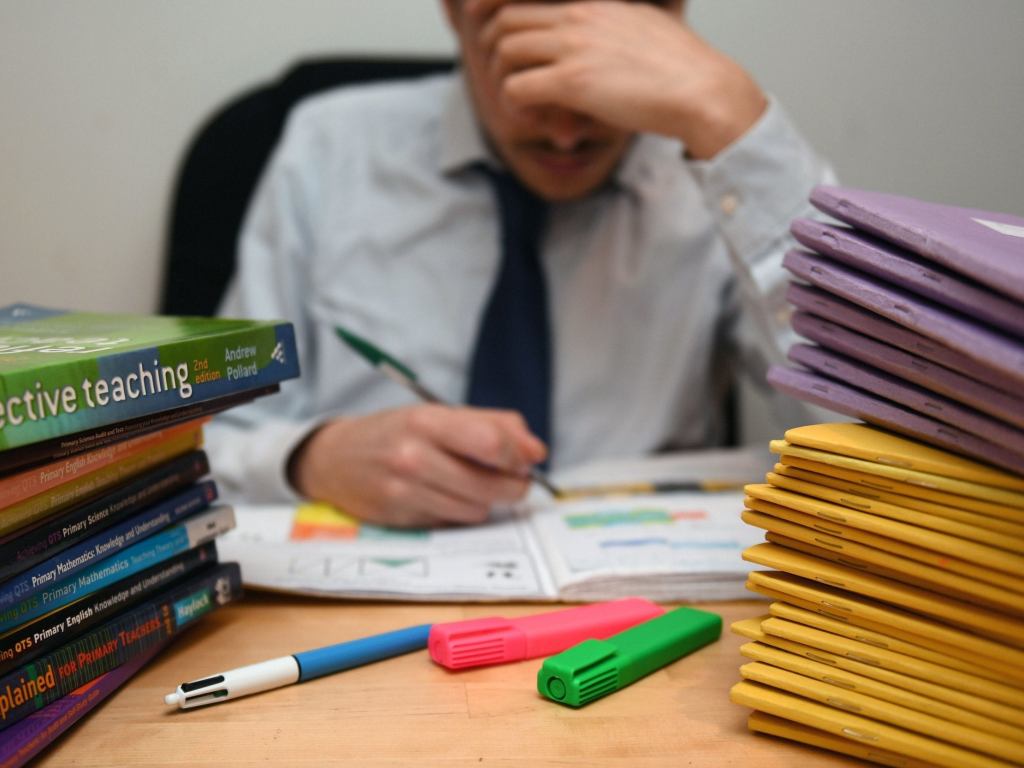It is an unprecedented time in our world. No one has experienced a global pandemic before, nor knows the proper way to handle the ongoing situation. With the most challenging task learning how to proceed with our daily lives while being conscious about the safety of those around us.
Of those multiple challenging tasks, we are all trying to face and conquer together, there is one in particular that needs addressing. How are students supposed to continue their eduction at a time when normal classroom settings are becoming obsolete?
The answer was found in the social media app Zoom. However, the next question is, does it provide the students with the same educational values and resources as being in the classroom does?
Zoom has had an impact on our schooling system in a multitude of ways, with the abrupt switch to remote learning leaving many teachers unprepared for how to teach in a new format and the inability to provide the proper resources students previously relied on. However, besides the teachers being unprepared and unfamiliar with how to navigate Zoom and transfer their classroom setting to an online format, how the students’ ability to learn has changed since being online needs to be considered.

Having never experienced a pandemic before, many schools struggled with the proper way to handle the increasing outbreaks in their communities, and it left many unprepared with how to continue provide an education to their students remotely. In the article, “Impact of Coronavirus on Education” by Taylor Christie, she discusses the new roles parents and teachers have found themselves in since the pandemic disrupted learning across the nation. While technology was previously instated at many schools, going completely virtual has ultimately taught many parents and instructors how to fix those pesky technological issues we often face and landed them in roles they weren’t used to. Christie discusses the rough transition from in person learning to online learning, as well as the unavoidable technological problems.
Teachers were forced to adapt all their lessons to fit in an online format, like Zoom and Microsoft Teams, while making sure their lesson didn’t fall short of any material or experience the students would have received if in person. Along with transferring all their lessons online, teachers also had to find a way to keep their students actively engaged in the classroom. As being at home leads to more distractions and less motivation to attempt their schoolwork. Christie mentions the absence of an instructor in the students’ homes as a possibility for the lack of motivation or self-discipline to attend school on an adjusted schedule or in a classroom setting many are unfamiliar with.
It has also left many parents taking on more roles to help their children succeed. Parents now have to act as teachers, not necessarily to help with homework or teach their children, but are acting as the instructor would to keep the students on task throughout the day and making sure the students continue to exemplify proper classroom behavior.
Obviously, technological problems happen and are unavoidable, and with online schooling it has been an adjustment for students, parents, and teachers to communicate and teach virtually. However, Christie has hope for less technological disruptions as people become more familiar with the technology they are using.

While being able to meet and conduct the days lesson over Zoom has seemed like a saving grace to many people who were worried about the abrupt stop to in-person classes and the negative effect it would have on students’ education, Zoom has still come with its own set of challenges.
Without the presence of an instructor and with parents who may not be home or are unable to keep their child on track with their schoolwork, it is harder for instructors to encourage their students to attend class. It is also harder for the instructors to provide the necessary resources to each student in their class as every student has a different way of learning, and another important aspect of school that is hard to duplicate over Zoom, is the normal human interaction and group activities.
It is very easy for students to chose to shut their videos and microphones off and to show up for attendance points but to not actively participate. Teachers will need to find new ways to keep students engaged with the material, whether that is more group activities or participation points.

When considering the reopening of schools, students are not the only ones who need to be kept safe. The faculty, which can consist of more susceptible ages, need to be considered as well. In the article, “America is not prepared for schools opening this fall. This will be bad” by Siva Vaidhyanathan, she discusses the new adaptations to learning and how teachers are feeling more overworked and unsafe than ever before.
Vaidhyanathan discusses her concern of many teachers resigning from their posts as they find it extremely difficult to keep everyone safe and teach their required material without the proper resources at hand. With most of the nation’s concern on how to continue providing adequate education to our students so they don’t fall behind, and as it should be a concern, we also need to consider the thoughts and concerns of the faculty at the schools who are on the front lines when dealing with the pandemic, trying to normalize online schooling, as well as dealing with the unknown future that we all find ourselves in.
Transferring to online schooling or hybrid learning, where a few days a week students are in person and then online the other days, it has led to many teachers feeling frustrated and having even more work than before without any compensation for their extra time and effort.

Not only do we need to be concerned with how faculty are able to handle more work in their already overworked lives, but we need to consider the parents who may be struggling more than ever to provide for their children.
Vaidhyanathan talks about schools who decided to split attendance, so half the students attend Mondays and Wednesdays, and the other half attends Tuesdays and Thursdays. This can be a burden to families who rely on after-school or morning care to watch their children when they need to be at work. It also means parents who work full time are struggling to find a person to care for their children more frequently , and some parents have lost income due to the shutdowns and are struggling to find another source of income.
With online education also comes the concerns for students who rely on school for more than earning an education. According to a New York Times article “Is Closing the Schools a Good Idea?” by Aaron E. Carroll, one and a half million students are homeless with thirty million children dependent on school lunch programs, and about fifteen million are dependent on the school breakfast programs as well. Not only is it crucial to evaluate new potential ways to teach these students, but it is important to find a way to continue to provide these services when schooling is conducted remotely. If these schools chose to conduct schooling over Zoom or other forms of online learning, students who normally rely on meals from their school may not receive a meal at home in place of the one they would be missing. For many families, adding more meals is not an affordable option and they have no other choice but to rely on their children’s school for meals, so they won’t go hungry for the day.

Another impact of Zoom is the possibility of an increased rate at which students are not attending classes. There will always be students who choose not to attend class or who don’t care about their grades. However, Zoom is providing a new reason for students not to attend class. Besides making it easier for students who don’t want to attend class, it has made it more challenging for the students who do want to actively participate, but don’t have the resources to do so.
The New York Times article “Remote Learning Is Often an Oxymoron” by Nicholas Kristof states roughly seventeen million students in America do not have access to a computer. This only proves Zoom makes it easier for students to not actively attend class if they don’t want to because they can use a lack of resources as a reason, and most schools have very limited resources and can’t provide a computer to all their students to eliminate that excuse. Ultimately, it leads to less accountability of students and more of a reason to skip classes.
Kristof refers to “online learning as an oxymoron.” Stating that schools with the most resources are the ones who impose these new standards on the other schools who don’t match in resources and funds. The problem is the new standards placed by the private, well-funded schools, are imposed on public schools with very limited budgets and resources even before the pandemic began. In his article, Kristof gives the example of President Trump’s son, Barron, who attends a private school that can provide adequate resources to all their students, so they are able to continue their educational journey from the safety of their homes. For many students this is not an option, their school may not have the resources to provide each student with internet and a computer to those who don’t have one in their home.

Kristof goes on to advocate for the reopening of schools stating, “our children are worth it.” Meaning online school is too much of a challenge and provides no real educational benefit as being in the physical classroom does, and while Kristof does agree it is important to consider the elderly. He mentions other key factors to consider as well. For example, children are of those least susceptible to Covid-19 meaning they would be less likely to be transmitters to the elderly faculty at their schools and to their grandparents. Another thing to consider is the safety standards schools put in place as well to help combat the spread of Covid-19. If schools are taking the necessary precautions and ensuring the safety of both students and faculty, there seems to be enough procedures in place for students to safely return.
Kristof wants people to consider other nations and how they have safely handled the reopening of schools without drastic rises in cases, but also notes in places like Sweden where they have reopened their schools but have not seen a significant rise in cases among teachers. Which ultimately means children are not this giant transmitter many people have feared. The fears are understandable since flu season tends to run rampant in schools, but because of how contagious and dangerous Covid-19 can be to the more susceptible, many more health and safety procedures have been put in place. Which would be a factor for students who may contract the virus for not spreading it as much as they would the flu.
All in all, it is an unheard-of time for everyone. No one knows the correct way to combat the spread of Covid-19 nor how to properly get our students back in the classrooms, whether that’s virtually or in-person. However, we do know the online setting won’t be as beneficial to our students education as the physical classroom, and that are issues that need to be addressed. Including providing students with the necessary resources to engage in online learning, provide students the meals they would normally receive, and ultimately how to keep their education on track so no student falls behind.
Citations
Carroll, Aaron E. “Is Closing the Schools a Good Idea?” The New York Times, The New York Times, 17 Mar. 2020, www.nytimes.com/2020/03/17/upshot/coronavirus-school-closings.html.
Goldstein, Dana, et al. “As School Moves Online, Many Students Stay Logged Out.” The New York Times, The New York Times, 6 Apr. 2020, www.nytimes.com/2020/04/06/us/coronavirus-schools-attendance-absent.html.
Kristof, Nicholas. “’Remote Learning’ Is Often an Oxymoron.” The New York Times, The New York Times, 2 Sept. 2020, www.nytimes.com/2020/09/02/opinion/remote-learning-coronavirus.html.
Vaidhyanathan, Siva. “America Is Not Prepared for Schools Opening This Fall. This Will Be Bad | Siva Vaidhyanathan.” The Guardian, Guardian News and Media, 13 July 2020, www.theguardian.com/commentisfree/2020/jul/13/america-schools-coronavirus-covid-19-children.
Christie, Taylor. “Impact of Coronavirus on Education.” Socialbakers.com, www.socialbakers.com/blog/impact-of-coronavirus-on-education.
Image Citations
“From Chalkboards to Zoom Rooms: Teaching During COVID-19: Poorvu Center for Teaching and Learning.” From Chalkboards to Zoom Rooms: Teaching During COVID-19 | Poorvu Center for Teaching and Learning, 24 Mar. 2020, poorvucenter.yale.edu/news/chalkboards-zoom-rooms-teaching-during-covid-19.
“How to Help Young Children Get the Most out of Online School.” Los Angeles Times, Los Angeles Times, 30 Sept. 2020, http://www.latimes.com/california/story/2020-09-30/what-parents-can-do-to-improve-online-school-k-3-grade.
“Opinion: I’ve Been Overworked as a Teacher Too. If Schools Gave Us the Right Support, We’d Survive a Lot Longer than Five Years.” The Independent, Independent Digital News and Media, 16 Apr. 2019, http://www.independent.co.uk/voices/teaching-schools-pupils-students-workload-five-years-report-a8871456.html.
Cardenas, Yasmine. “Cut the Cameras: Students Opt to Shut Off Camera During Zoom Classes.” The Sundial, sundial.csun.edu/161943/arts-entertainment/cut-the-cameras-students-opt-to-shut-off-camera-during-zoom-classes/.
“524 Schools Drop out of the National School Lunch Program.” PBS, Public Broadcasting Service, 30 Sept. 2013, http://www.pbs.org/newshour/nation/524-schools-drop-out-of-the-national-school-lunch-program-over-new-standards.
Halverson, Heather. “Private Schools vs. Public Schools.” Medium, Student Lives, 17 Apr. 2019, medium.com/student-lives/private-schools-vs-public-schools-cfe98aff887.
